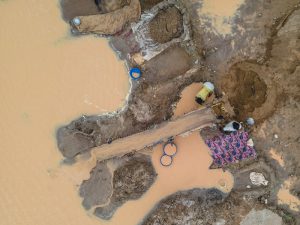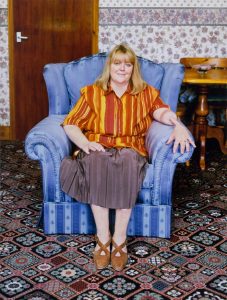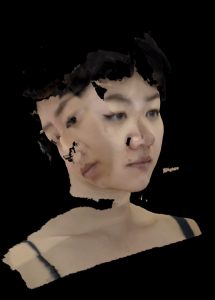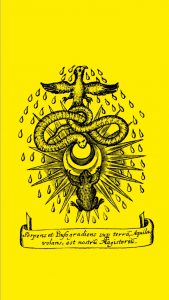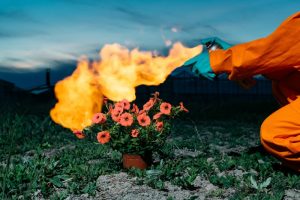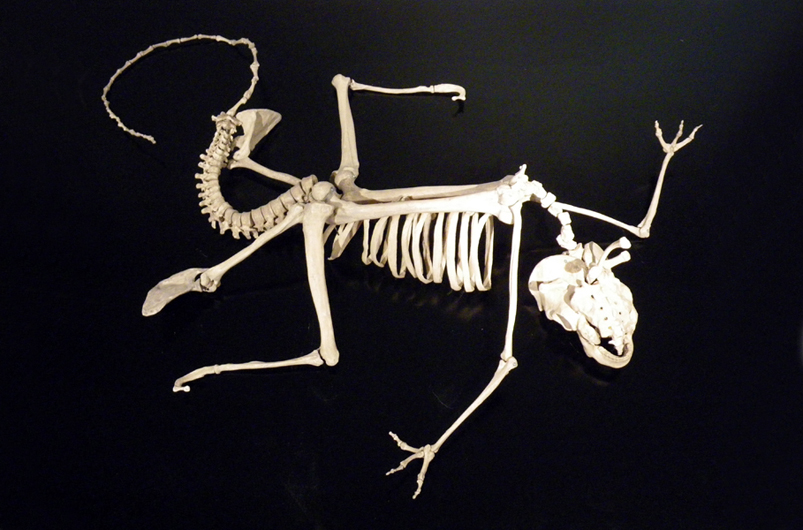
Maarten Vanden Eynde, Homo Stupidus Stupidus
A few days ago, the MU art center in Eindhoven organized a Body of Matter / BAD Award weekend of talks, masterclasses, panels and performances. The event accompanied Body of Matter exhibition, an exhibition that looks at how biotechnology might in the near future modify the shape, functions and even our perception of the body. The show also offers the opportunity to discover the winners of Bio Art and Design Award which each years enables young artists and designers to develop collaborate with prominent Dutch science centers and develop ambitious projects related to the latest developments in art sciences.
A lot happened during that weekend and I’ll come back with more details about it later on. Today, i thought i should dedicate a full post to Maarten Vanden Eynde‘s brilliant lecture on the first evening. He talked about how the fish, the beaches and even ourselves are chocking on plastic, about King Leopold II of Belgium and his brutal exploitation of Congo, and about the Homo Sapiens, a species so presumptuous it gives itself the title of ‘doubly wise.’
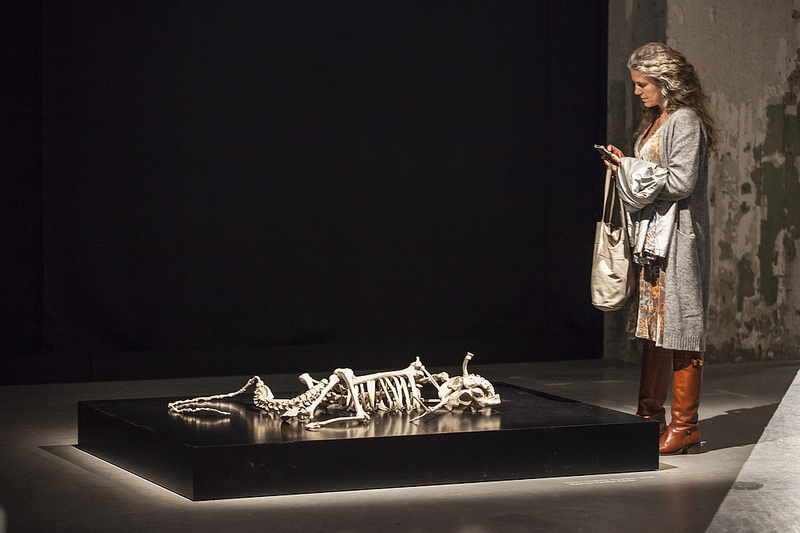
Maarten Vanden Eynde, Homo Stupidus Stupidus, part of the Body of Matter exhibition. Photo by Hanneke Wetzer for MU Eindhoven
Vanden Eynde doesn’t define himself as a bioartist. What interests him is the Genetology (The Science of First Things), Eschatology (The Science of Last Things) and how these two relate. As a result, his work hovers between past and future. His talk zoomed in on the piece he is showing in the Body of Matter exhibition as well as on 3 other works related to the body and to the evolution of our planet:
Homo Stupidus Stupidus is a human skeleton taken apart and put back together as if the person who assembled the bones had no knowledge of human anatomy. The name of the piece refers to the mistakes done in attempting to reconstructing the skeleton but it also mocks the arrogance of our own species which define itself as Homo Sapiens Sapiens. Given the unethical way in which we behave towards the environment, other species or between ourselves, the title of Sapiens Sapiens is unquestionably inappropriate.
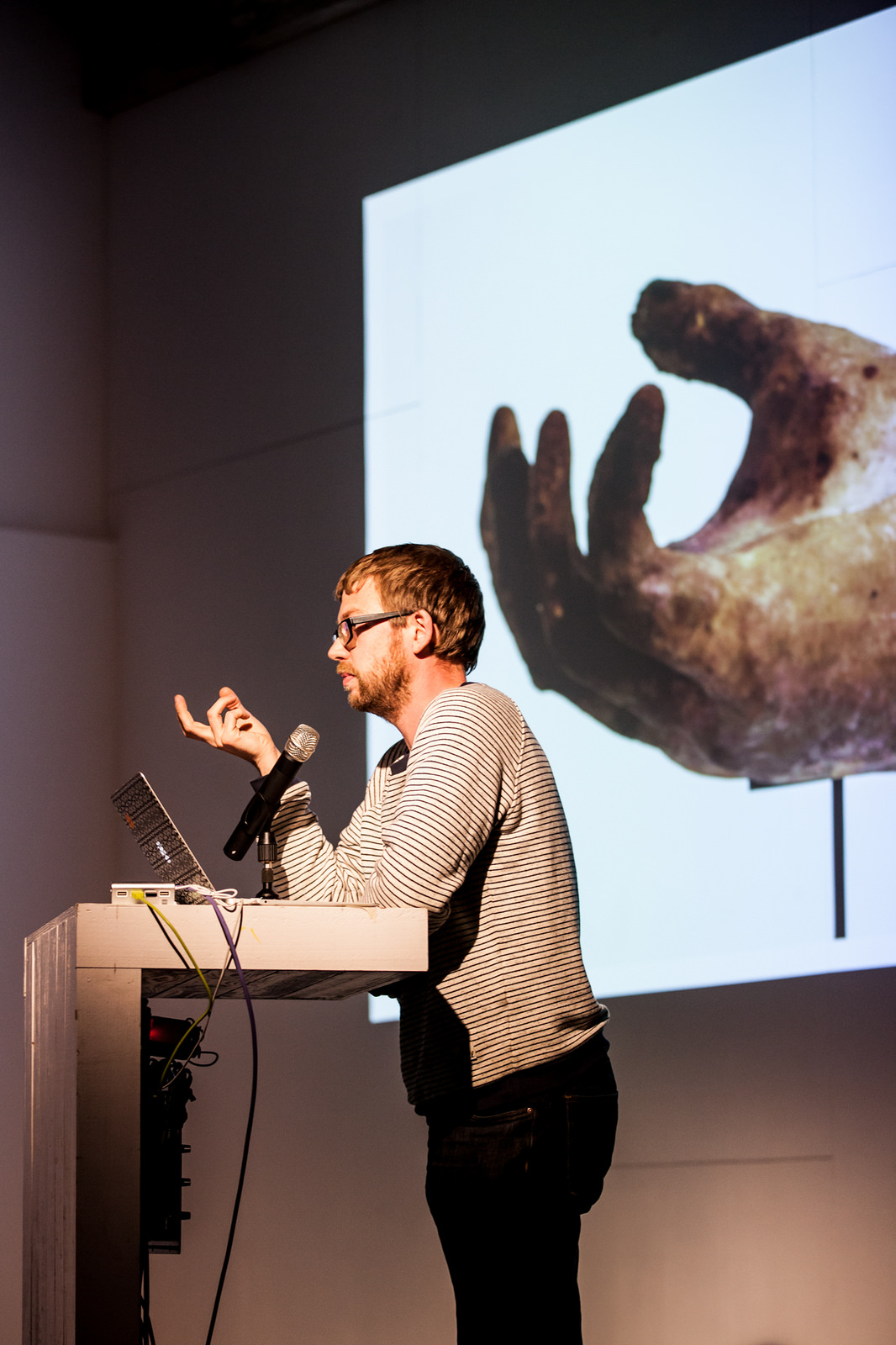
Maarten Vanden Eynde’s lecture during the Body of Matter special weekend, 22 January 2016. Photo by Hanneke Wetzer for MU Eindhoven
Vanden Eynde also took us through another of his work that is directly related to the body: The Invisible Hand, a rubber copy of the right hand of Leopold II of Belgium. The artist made it at night by climbing on the equestrian statue of king in Brussels.
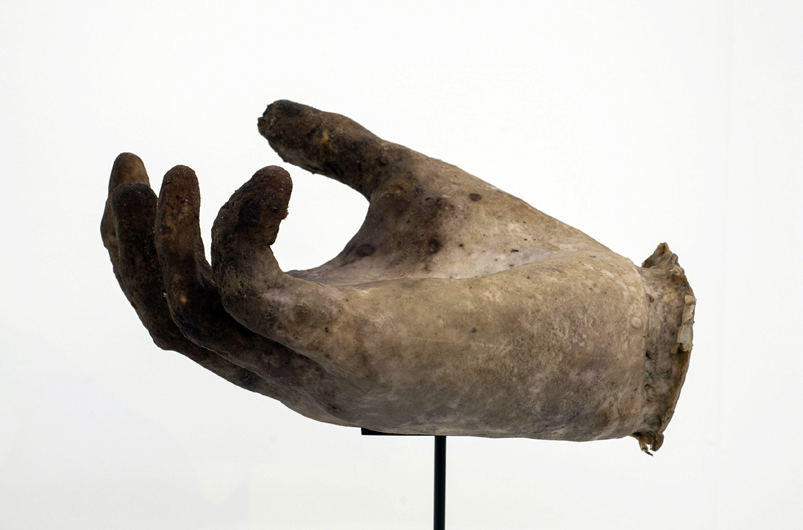
The Invisible Hand, Art Brussels 2015, Belgium
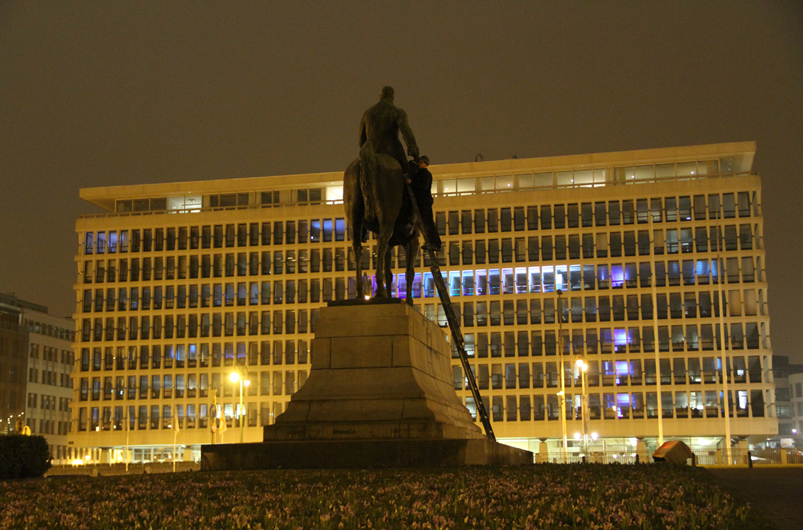
The Invisible Hand (making-of), Brussels, Belgium
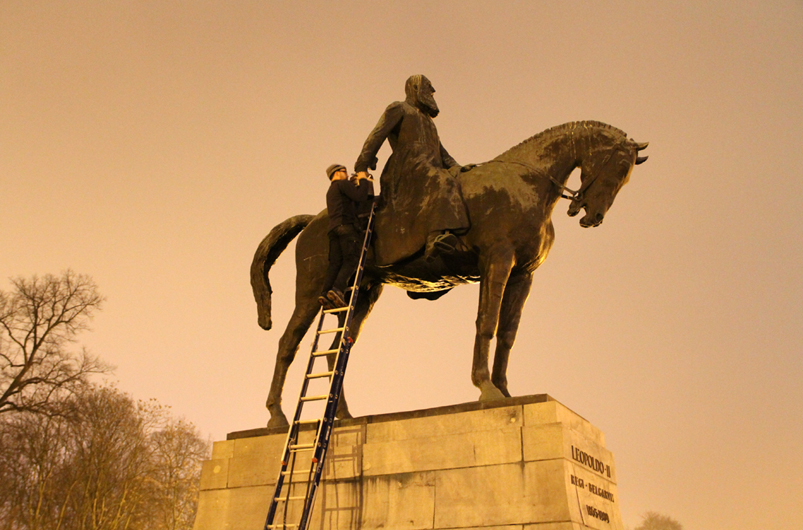
The Invisible Hand (making-of), Brussels, Belgium
From 1877 until his death in 1909, Leopold II, had an unprecedented influence on the current Democratic Republic of Congo. He was the founder and private owner of the Congo Free State, a territory he was eventually forced to cede to Belgium in 1908. The Congo Free State then became a Belgian colony under parliamentary control.
Although the king never set foot in the country, he changed, exploited and shaped it so fundamentally that the result is still visibly present today. The Invisible Hand refers thus to Adam Smith‘s 1759 theory of the same name. The concept could be summed up as follows: individuals’ efforts to pursue their own interest and profit may frequently benefit society and the entire economy more than if their actions had been directly intended to achieve the greater good. Of course few attained that more unwillingly than Leopold II whose reign is marked by the atrocities that Belgians committed in Congo. With the chief goal of ruthlessly exploiting the natural resources of the African country, Leopold II’s politics nevertheless instigated a local economic growth, but at a high price. More than 10 million people are estimated to have died as a consequence of Leopolds ‘Invisible Hand’.
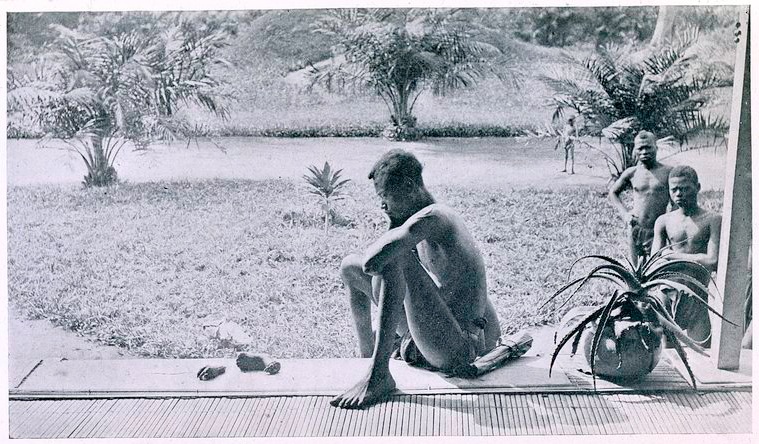
Nsala looking at the severed hand and foot of his five-year-old daughter, Boali, a victim of the Anglo-Belgian India Rubber Company (A.B.I.R.) militia, 1904
The name ‘The Invisible Hand’ doesn’t just refer to Smith’s theory of an unobservable market force, it also alludes to the custom of chopping the hands of enslaved people who didn’t work hard enough.
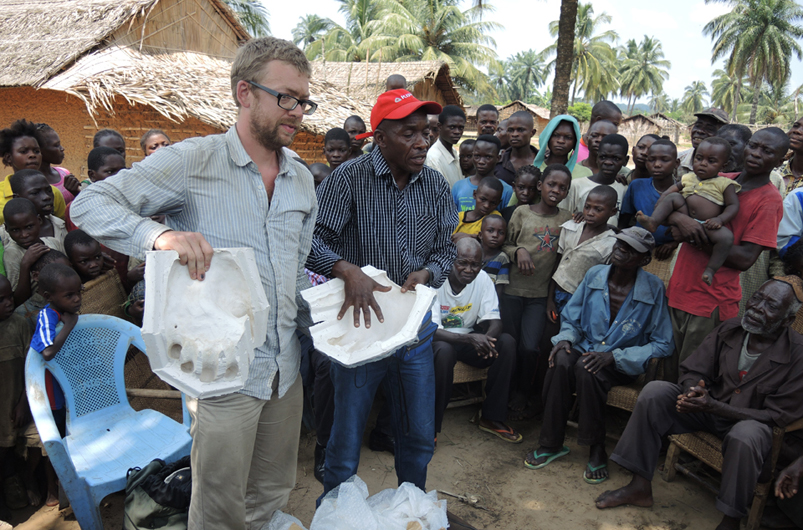
The Invisible Hand (making-of), Ngel Ikwok, Kasai-Occidental, Democratic Republic of Congo
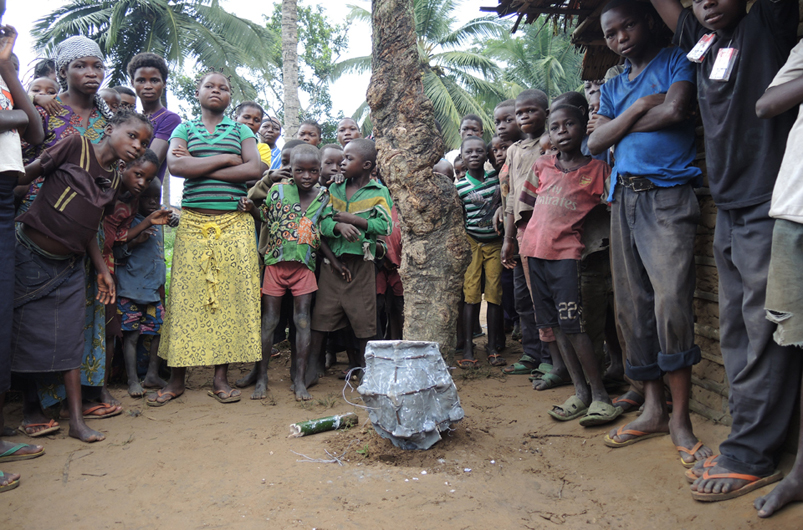
The Invisible Hand (making-of), Ngel Ikwok, Kasai-Occidental, Democratic Republic of Congo
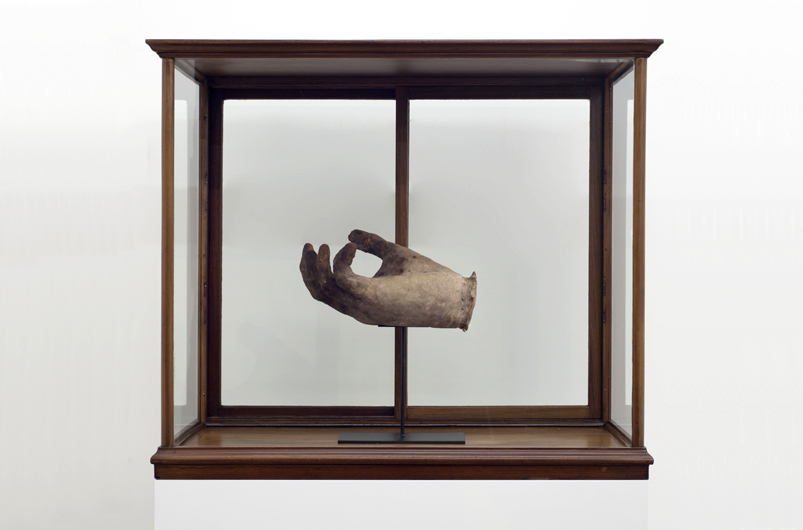
The Invisible Hand, Art Brussels 2015, Belgium
But let’s get back to the artwork, Vanden Eynde went to the Democratic Republic of Congo with the copy of the hand of the ruler who had never traveled to his ‘own’ colony. The artist brought the mould to an abandoned rubber plantation in Kasai-Occidental and filled it up with natural rubber. Strangely enough, the rubber reacted to oxygen and decayed quite rapidly, the white rubber hand turned into a black one that smelled atrociously.
The hand traveled back to Belgium where it was presented inside an old Victorian vitrine at the art fair Art Brussels, completing the problematic circle of colonial treasure hunting in relation to historical fetishisation.
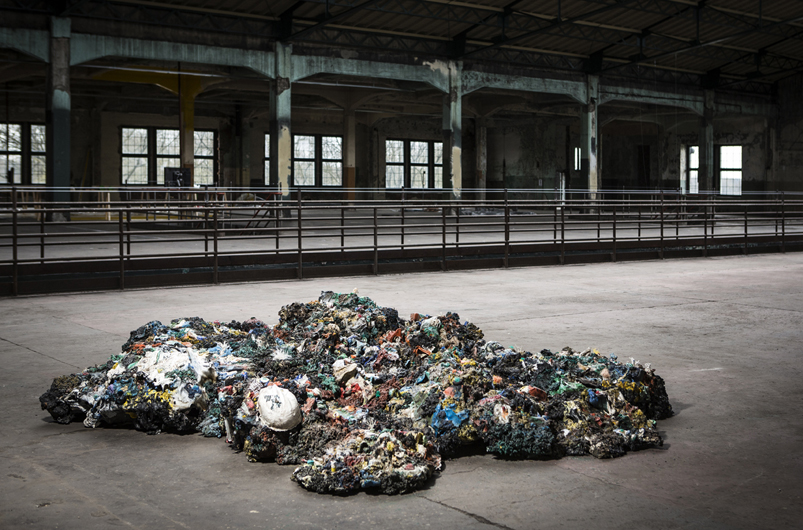
Plastic Reef, Manifesta9, Genk, Belgium, 2012
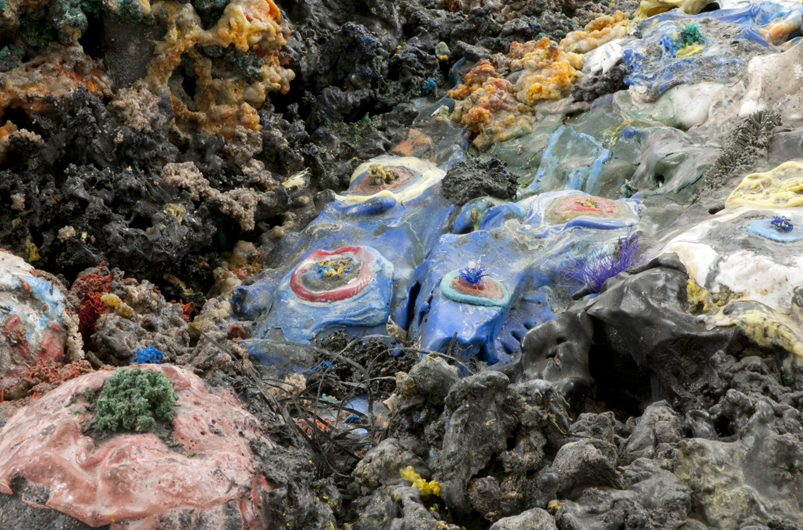
Hordaland Art Center, Bergen, Norway, 2013
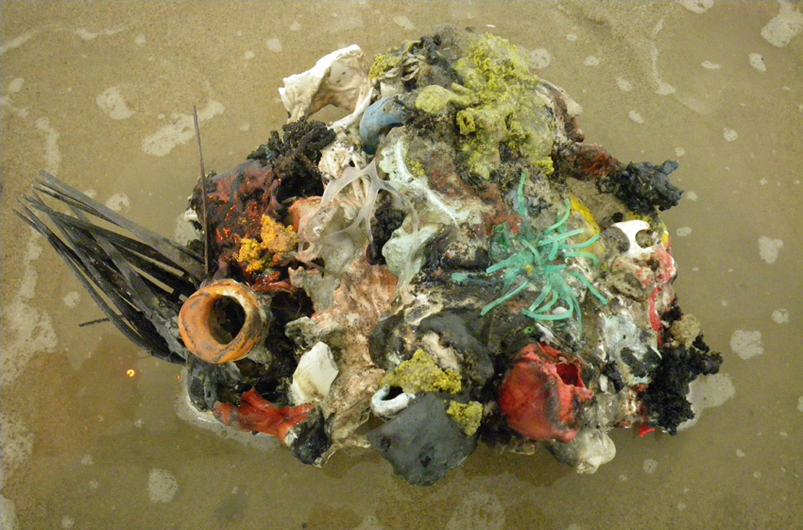
Glendale College Art Gallery, Los Angeles, US, 2009
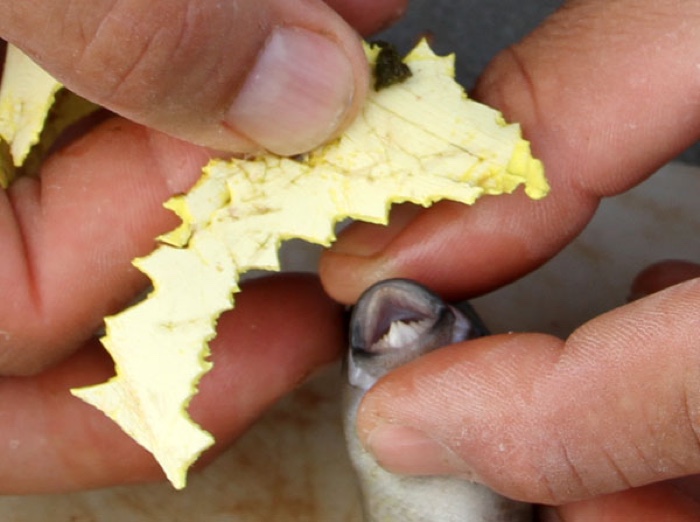
Fish caught in a plastic containers.Its teeth seem to fit the bitemarks on the plastic debris. Photo
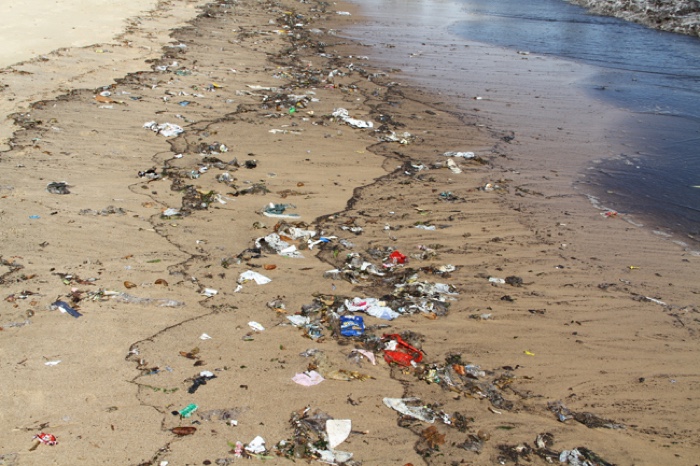
Beach trash in Montevideo. Photo
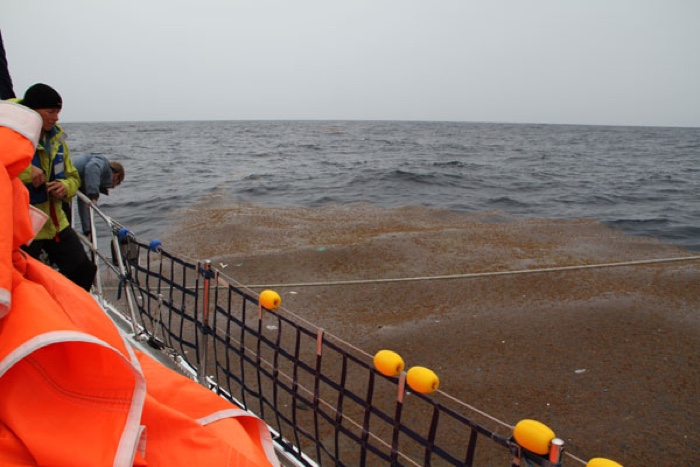
Plastic flocks together with patches of sargassum seaweed floating in the North Atlantic Gyre. Photo
Next, the artist talked about Plastic Reef, a work that explores the longevity of plastic trash that floats around our oceans, litters our land, is buried underground and might very well outlive our species. Plastic doesn’t decompose, it shrinks down through friction and light into ever smaller pieces. These tiny plastic particles are called “mermaid tears” and in some parts of the ocean, their masses can be even greater than plankton. Some sea creatures mistake the particles for food, putting them directly into the food chain and thus potentially onto our plates.
Today there isn’t a single cubic meter of sea water that is free of plastic particles. By 2050, there will be more plastic than fish in the sea and according to Captain Charles Moore, we can’t even see all of it because plastic is present up to 100 meters below the surface of the sea. Entire gyres have taken shape in our oceans in which plastic trash is being washed around by the currents and form what looks like islands of rubbish. The biggest water-based plastic trash aggregation, called the Great Pacific Garbage Patch, is estimated to be about the size of Central Europe.
Al Jazeera, Micro-plastics fill world’s oceans
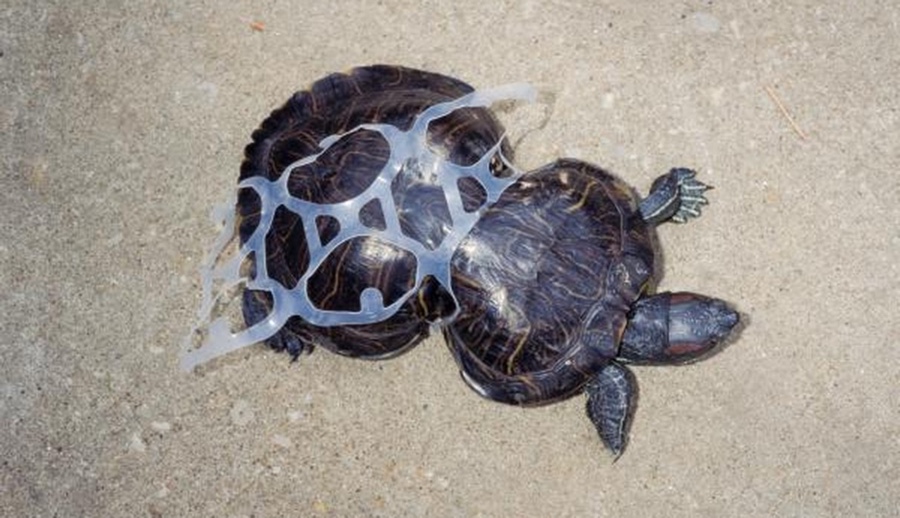
Peanut the turtle before being rescued from the plastic ring of a six-pack holder. Photo Missouri Department of Conservation, via The Dodo
The artist visited ocean gyres around the world and collected hundreds of kilos of plastic debris from each place. He then melted the trash to form a sculpture that grows in size and weight each time it is exhibited, reflecting how the material is relentlessly invading our planet and damaging its fauna and flora.
The trash became beautiful again and seemed to solve two problems at the same time: the plastic in the ocean and the disappearing of coral reefs world wide, the artist writes
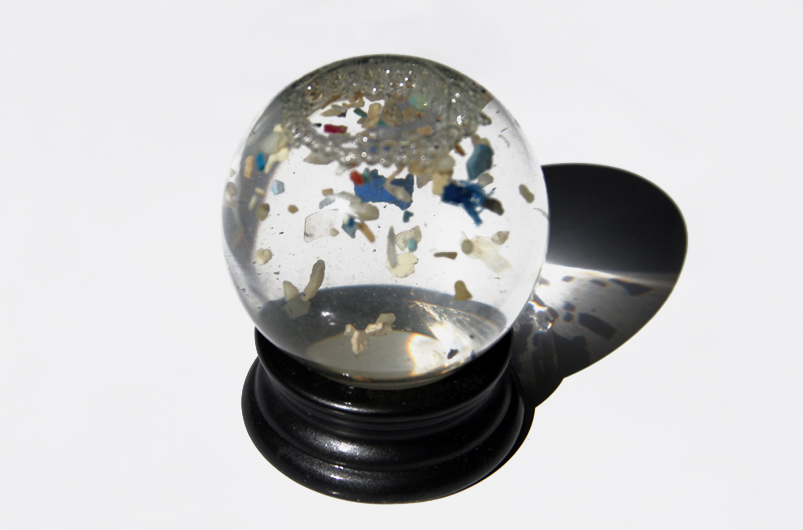
1000 Miles Away From Home, Hordaland Art Center, Bergen, Norway, 2013
The final work that the artist presented are five snow globes that symbolize the five main oceanic gyres. The globes contain water and bits of plastic debris Vanden Eynde collected in the North and South Atlantic, the North and South Pacific and the Indian Ocean. The snow globe is like a time capsule for the future. When it is shaken the water creates a micro gyre making the plastic swirl around.
I really want one of those snow globes….
There’s only a few days left to visit the Body of Matter exhibition at MU in Eindhoven, it closes on 7 February 2016.

